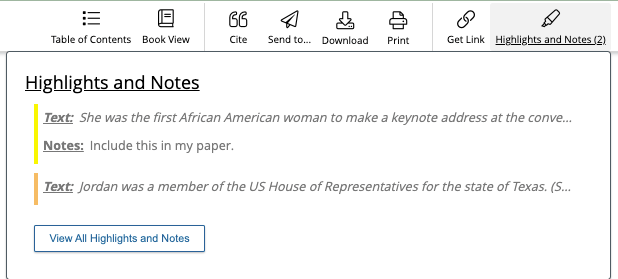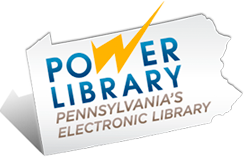
The days of lugging around a heavy backpack of textbooks are coming to an end. Over the last few years, many schools across the country have transitioned to offering e-books in the classroom. Though some might still be skeptical, e-books and digital libraries are here to stay.
The advantages of e-books are far and wide – especially in education. Discover the advantages and disadvantages of using e-books in your classroom — plus some helpful databases you can use to find titles with your local library card or POWER Library eCard.
What Are the Advantages of E-Books?
Though there are some readers who may still prefer picking up a printed copy, there are some qualities that just can’t be beaten when it comes to using digital versions. The following advantages are just a few of the many that give e-books an edge over printed copies.
- Flexibility
Perhaps the greatest advantage of e-books is that they can be accessed anywhere, at any time. Where there’s internet access, there’s access to e-books — and in some cases, there’s even access to e-books without internet access.
Going on a family vacation? Studying on the way to a sporting event? If you download the title to your device beforehand, you’ll be able to access your e-book later when you’re on the go. You won’t have to worry about carrying a heavy textbook anymore.
This creates some flexibility in the learning process. Students with busy schedules can access their textbooks with greater ease whenever and wherever they please.
- Accessibility
E-books can improve accessibility by simplifying the learning experience for students with disabilities. Most online books have text-to-speech features that will read the page content aloud, and they offer tools to increase or decrease the font size.
Students with visual impairments or reading disabilities benefit from these accessibility features — which are exclusive to electronic versions — making it one of the most practical advantages of learning with e-books.
- Sustainability
It’s estimated that thirty-two million trees are used annually to print books in the US.
The process of publishing an e-book requires 0 paper and 0 trees. Therefore, the environmental impact of digital books is far less than their printed versions.
Leaning into reading books online can help reduce our carbon footprint, benefitting our world in the long run. This is especially true when it comes to textbooks since new theories are being proven and newer versions must be printed.
- Easily Editable
That brings us to the next point: e-books are easily editable. As new studies are conducted and new conclusions are drawn, digital versions can be updated with up-to-date information much faster than reprinting an entire textbook.
Not only is it faster, but it’s also cheaper too. Part of the reason textbooks are so expensive is because of the cost it takes to print them. Digital versions require no printing costs — just another advantage e-books have over physical copies.
This is great news for underprivileged schools. Not all districts can afford to keep up with purchasing thousands of updated textbooks. If they facilitate learning with e-books, they can ensure their students are presented with the current, most accurate information for far less.
- Interactive
Since they are digital, e-books have the unique ability to link externally to other sites or articles and embed audio or visual items throughout the text. If readers don’t understand or want to explore a topic further, these multimedia elements provide the opportunity to do so.
Not only do these elements create an immersive reading experience, but they also make the content more memorable. The more memorable the content, the greater the chance students will retain the information.

How Interactive E-Books Facilitate Learning
E-books that are interactive can create something called “adaptive learning.” Adaptive learning is a process that offers unique instruction based on the learner’s needs. Through using it, teachers can provide extra support for their students who need it in an efficient, scalable manner.
The general concept of adaptive learning has been around for decades; when students need additional help, the teacher provides 1-on-1 instruction. As schools embrace technology, adaptive learning uses web-based platforms like e-books to personalize the student learning journey.
Embedding videos, links, and articles throughout e-books can help students customize and pace their learning independently. When they can take control of their own learning path, they stay engaged with the content, which boosts retention and yields a positive educational experience.
Where to Find E-Books using POWER Library
If you have a PA public library card or a POWER Library eCard, you can use POWER Library’s free e-resources to find e-books online.
EBSCO E-Books
If you’re looking for a resource that covers all of the major subject areas, EBSCO E-Books is a great place to start. They are the world’s leading publishers, and they offer 16,000 digital titles for free for PA public library card holders.
You can browse by subject category, or search for titles directly. Read the digital version online, or download it to your device to read later!
If you create an EBSCOhost account, you can save your books to specific folders to keep them organized and make navigating to them easier in the future.
GALE E-Books
If you’re looking for books, encyclopedias, or specialized reference sources, explore using GALE E-Books. They cover topics such as history, science, technology, medicine, and more.
When you find a title that you like, you can read it right online or you can download it for later. If you’re reading online, Gale has a feature that allows you to make highlights and add notes throughout the text.
To easily navigate to those notes later, click on the highlighter icon on the top right of the page. Here, you can view all of the highlights and notes that you left without having to manually flip through the pages.

Cons of E-Books
Though there are a number of advantages, there are some disadvantages of e-books to also consider. Perhaps the most obvious is that it requires the use of an electronic device. If a student doesn’t have one and the school can’t provide them with one, the flexibility and ease of using the electronic versions are diminished.
In addition, prolonged staring at a computer, tablet, or smartphone screen can cause strain on our eyes. The American Optometric Association actually recognizes this as computer vision syndrome. Aside from eye strain, symptoms of this condition include:
- Headaches
- Blurred vision
- Dry eyes
- Neck and shoulder pain
Most of these symptoms are only temporary and will resolve after taking a break from the digital device, but if not handled properly, they could worsen with future use.
In terms of environmental impact, the sustainability of e-books is much greater than printed versions, but they aren’t a perfect counter-option. While they use fewer trees to publish, a great deal of energy is still used to create digital publications (not to mention, the devices they are read on).
Like all changes, making the switch to e-books comes with both pros and cons. But when it comes to learning, their flexible and interactive qualities give them an edge over traditional textbooks.
